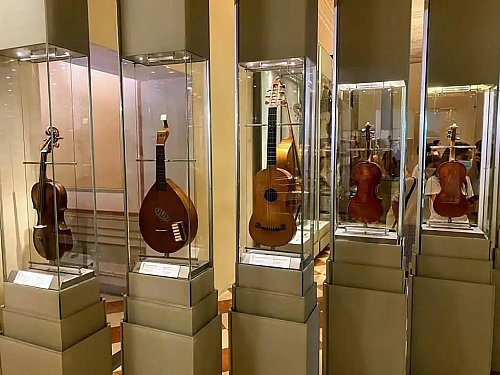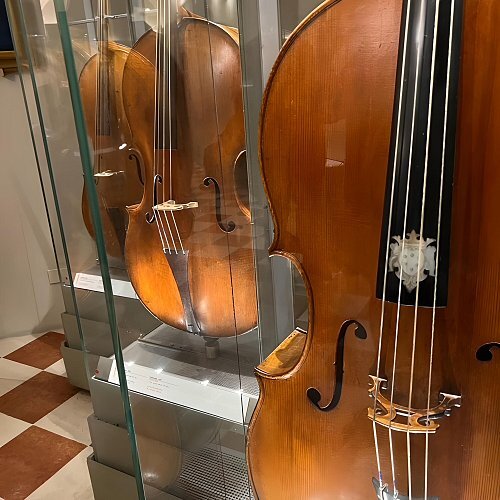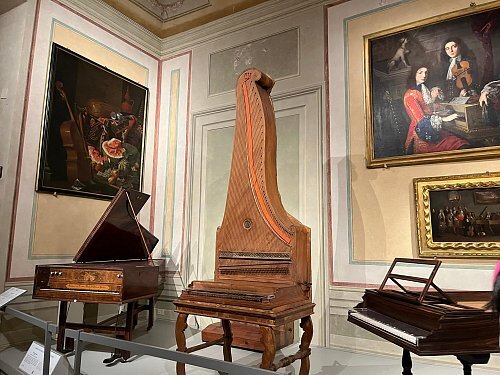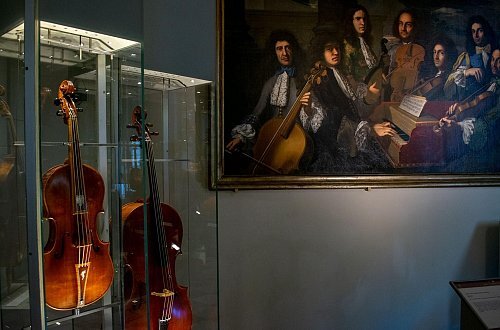Instrumentos musicais

Para os amantes da ópera, do teatro e da música clássica, se você é realmente apaixonado, a Accademia é um dos melhores lugares para se visitar em Florença. Na seção do Conservatório Luigi Cherubini, há uma exposição especial dedicada à coleção Grand Ducal, com cerca de 50 instrumentos musicais. Essas peças demonstram o papel importante que a música desempenhava na vida cotidiana e nas festividades oficiais da Corte Mediceia, através de sua excepcional qualidade sonora, materiais nobres e beleza estética.
Explorando a coleção de cravo, instrumentos de corda e sopro, é possível descobrir onde o piano teve seu início, criado por Bartolomeo Cristofori para os Médici por volta de 1699. Sistemas multimídia fornecem aos visitantes informações sobre as características e os sons desses instrumentos, além de notas sobre os diversos banquetes suntuosos organizados pelos Médici em vilas ou teatros, todos concebidos para exibir, com grande pompa, a riqueza cultural do século XVII.

Viola de Stradivari
Uma das peças mais preciosas da Accademia é a viola tenor, obra única de Antonio Stradivari, de 1690. É feita de madeira de abeto vermelho e bordo de alta qualidade, com o brasão dos Médici incrustado em madrepérola, marfim e ébano. A viola tenor estava entre as cinco melhores do “quinteto Medici”, um conjunto especial de cinco instrumentos de cordas feito para o Grão-Príncipe Fernando, também em 1690.
Esta viola é uma obra de arte excepcional, uma vez que era o único exemplar que se conservava na sua magnificência original.

A invenção do piano
Em 1688, foi contratado pelo Grão-Príncipe Fernando de Médici, o que deu um impulso total à sua vida na construção de instrumentos musicais, enquanto experimentava novos materiais e sons. Entre as suas invenções famosas encontram-se os spinnets e os cravo. Uma invenção excepcional, que chegou mesmo a ser registada em documentos oficiais, é o “pianoforte” (piano).
Guias audiovisuais permitem aos visitantes ouvir demonstrações do som do piano pioneiro, comparando-o com o cravo que o precedeu.

Músicos na corte
Anton Domenico Gabbiani pintou uma série de telas mostrando os músicos e seus instrumentos contratados na corte do Grão-Príncipe Fernando pelos Médici entre 1685 e 1690.
Nos retratos de Gabbiani, muitas de suas representações precisas de roupas e, especialmente, dos próprios instrumentos são identificadas como presentes, diretores musicais dos Médici: Pedro Salvetti e Francesco Veracini.
Em seguida, na sala dedicada a Bartolomeo Cristofori, inventor do piano, há algumas naturezas mortas do século XVII representadas por coleções que exibem mesas muito valiosas rodeadas por instrumentos musicais muito finos e frutas muito frescas.
